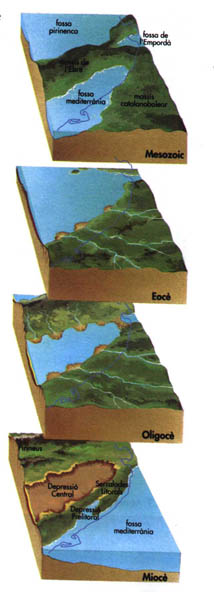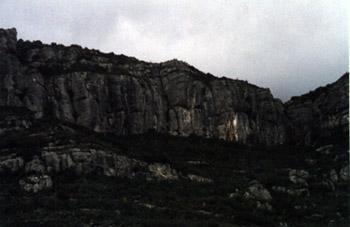Deductions
about the observation of sedimentary environment from Catalunya
DEPRESSIÓ
CENTRAL
| As you can see at the map 1, the Depressió Central is a great depression placed at the inner part of Catalunya between two chains of mountains : Prepirineus and Prelitoral. |
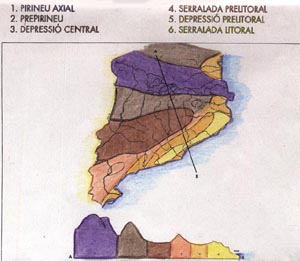
Map1
| Its geological history can be deducted starting by the observation of sedimentary rocks which constitutes this depression and their actual distribution (map 2) |
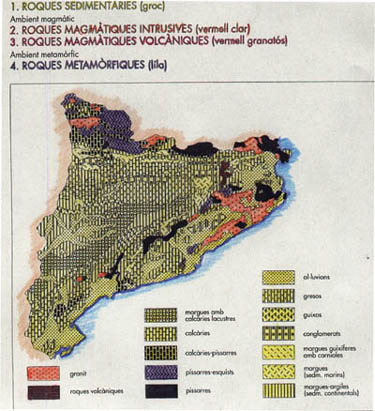
Map 2
| First deduction | Second deduction | Third deduction | Fourth deduction | Fifth deduction | Sixth deduction |
|
The existence of a great salt mountain (Picture 1) at the north of the depression, which is the biggest salt deposit from Europe, proves the existence of an ancient inner sea which was slowly evaporated. |
 Picture 1 |
|
The different salts precipitated when the last
arm of that sea was evaporated and in this manner was originated the actual
beds of rock salt. The bed is a kind of salt dome (Picture 2) |
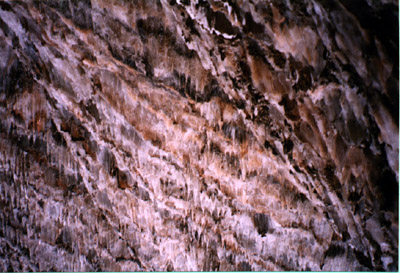 Picture 2 |
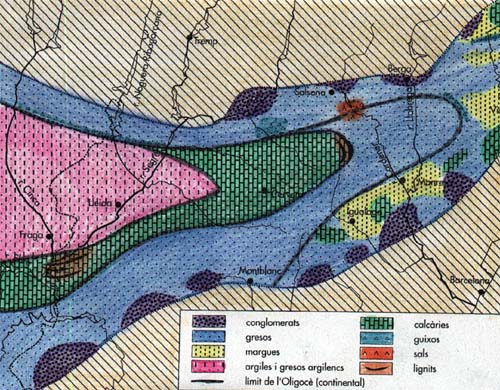
Picture 3
|
Beyond the actual distribution of different
clastic sedimentary rocks in the inner of the Depressió Central (Picture3) you can deduct: .
the ancient limits of that sea .
the geographical situation of the shoreline and the deepest zones. a/ The conglomerate situation corresponds at
the mouth of the rivers which descended from the ancient mountains that surrounded
the sea. So, if you design a line along their actual situation you have the
ancient shoreline. b/ The gradual disposition of the sandstones
and finally the shales formed by the finest sediments indicates the
situation of the deepest zones.
Observing the existence of coral calcareous rocks you can deduct that
this sea had clear and hot waters and also it wasn’t very deep. The fossils of the Depression prove the age of that sea which corresponds more or less at the Third period of Cenozoic Era. |
| The story of that ancient sea could be briefly
explained by the next schemes (Picture
4):
|
Picture 4 |
|
Beyond the study of the Montserrat mountain
relief (Picture 5), the chemical analyse and the observation the texture
(Picture 6) of their constituents conglomerate rocks We can deduct: |
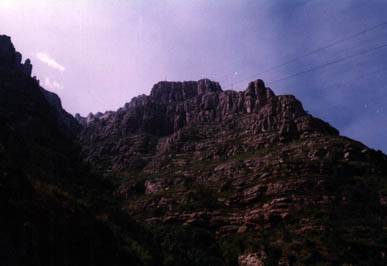 Picture 5. Montserrat mountain relief
|
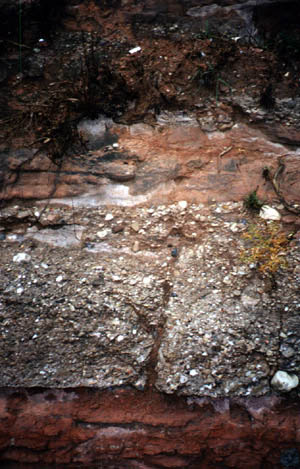
Picture 6. Texture of conglomerate rocks |
|
5.1.
This kind of relief is the result of the rain
water and atmospheric CO2 action over the
CaCO3
constituent of the union cement of this conglomerates (Picture 7) that have
been made the vertical fissures by the years .
The
chemical reaction of this process is:
CaCO3 + H2O + CO2 à Ca(CO3H)2
Insoluble Soluble
|
Picture 7
|
| 5.2. The river water action over horizontal strata with different resistance to erosion originates the tabular relief by differential erosion (Picture 8) | 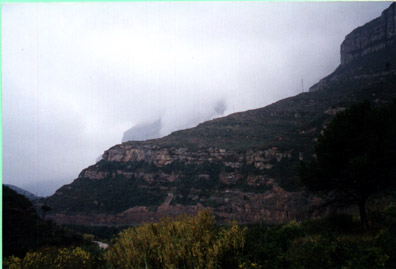 Picture 8. Tabular relief |
|
If you go at the Serralada Prelitoral, you can see an Angular Uncomformity
between the Paleozoic
and Mesozoic rocks (Picture 9, 10 and 11). |
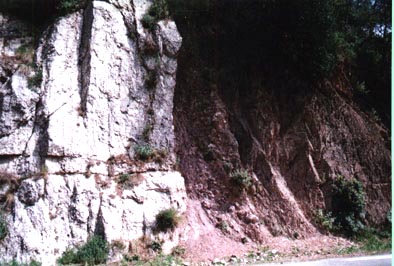 Picture 9. Angular Unconformity between Paleozoic and Mesozoic rocks |
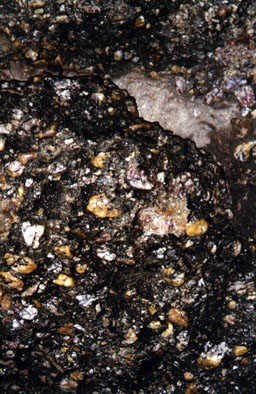
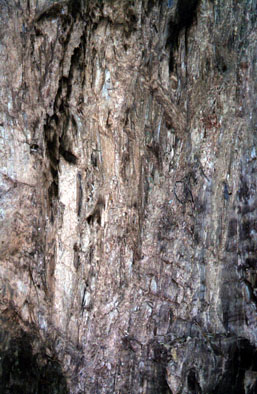
Picture 10. Mesozoic conglomerate
Picture 11. Shale of the Paleozoic
|
This geological structure proves:
6.1.
The Paleozoic rocks
are folded and the Mesozoic are not, then we can deduct that the hercynian orogeny was at the end
of the Paleozoic .
6.2.
After the orogeny
there was an erosion of this folded materials
6.3.
Finally there was the horizontal sedimentation
of the Mesozoic rocks over the anterior eroded surface (Picture 12). |
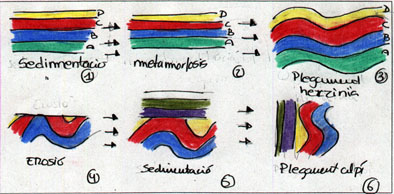
Picture 12. Unconformity process
| First deduction | Second deduction | Third deduction | Fourth deduction | Fifth deduction | Sixth deduction |

